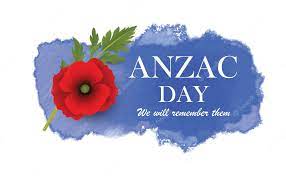Anzac Day is a national day of remembrance observed annually on April 25th in Australia and New Zealand. It commemorates the brave men and women who have served and sacrificed their lives in wars, conflicts, and peacekeeping operations. The day holds a special significance as it marks the anniversary of the landing of the Australian and New Zealand Army Corps (ANZAC) troops at Gallipoli during World War I.

Read Also: Day of the Dead
A Brief History of Anzac Day
The origins of Anzac Day can be traced back to the Gallipoli campaign during World War I. On April 25, 1915, the ANZAC troops landed on the shores of the Gallipoli Peninsula in Turkey, marking the beginning of an eight-month-long campaign. Despite their courage and determination, the campaign ended in a military defeat, with over 8,000 Australian and 2,700 New Zealand soldiers losing their lives.
The first Anzac Day was held on April 25, 1916, to honor the fallen soldiers of the Gallipoli campaign. Since then, the day has evolved to remember and pay tribute to all those who have served and died in wars, conflicts, and peacekeeping operations.
Anzac Day Facts | |
| Also called | Māori: Rā o Ngā Hōia |
|---|---|
| Observed by | Australia Christmas Island Cocos (Keeling) Islands Cook Islands New Zealand Niue Norfolk Island Tokelau Tonga |
| Type | Commemorative, patriotic, historic |
| Significance | National day of remembrance and first landing of the Anzacs at Gallipoli |
| Observances | Dawn services, commemorative marches, remembrance services |
| Date | 25 April |
| Next time | 25 April |
| Frequency | Annual |
| Related to | Remembrance |
Anzac Day Traditions and Customs
Anzac Day is observed with various customs and traditions that aim to honor and remember the sacrifices made by the brave servicemen and women. Some of these customs include:
- Dawn Services: Anzac Day typically begins with dawn services held at war memorials and cenotaphs across Australia and New Zealand. These solemn ceremonies are held at the same time as the original Gallipoli landing, symbolizing the “coming of light” after the darkness of war.
- Anzac Day March: Veterans, current serving members, and their families participate in marches through cities and towns, proudly wearing their medals and unit insignia.
- Laying of Wreaths: Wreaths are laid at memorials and cenotaphs during Anzac Day ceremonies, symbolizing remembrance and respect for the fallen.
- The Last Post: The bugle call “The Last Post” is played during the Anzac Day ceremonies, signifying the end of the day’s activities and the final farewell to the fallen soldiers.
- The Ode of Remembrance: A poignant verse from the poem “For the Fallen” by Laurence Binyon is recited during the ceremonies, expressing the enduring memory of those who have served and sacrificed their lives.
- Anzac Biscuits: These traditional biscuits, made from rolled oats, coconut, and golden syrup, were sent to soldiers during World War I due to their long shelf life. Anzac biscuits are now enjoyed as a symbol of remembrance and support for the troops.
FAQs: Common Questions about Anzac Day
Q: Why is Anzac Day important?
A: Anzac Day is important as it commemorates the service and sacrifice of the Australian and New Zealand soldiers who have fought in wars, conflicts, and peacekeeping operations, honoring their courage and determination.
Q: When is Anzac Day observed?
A: Anzac Day is observed annually on April 25th.